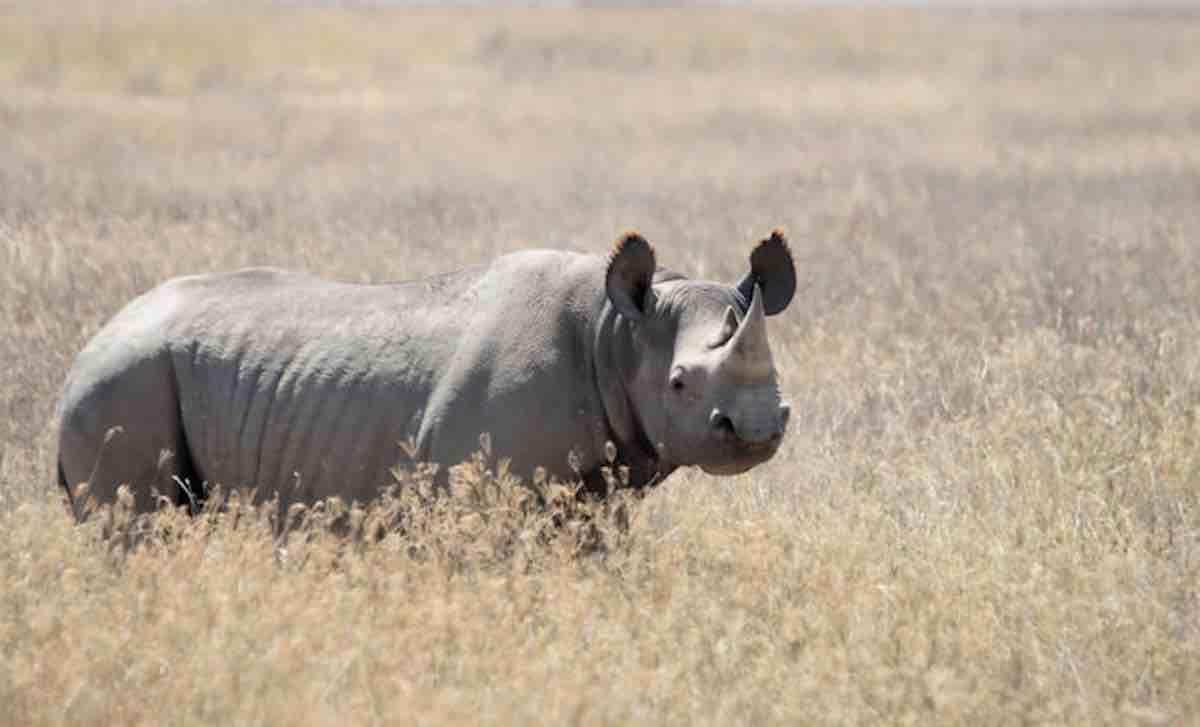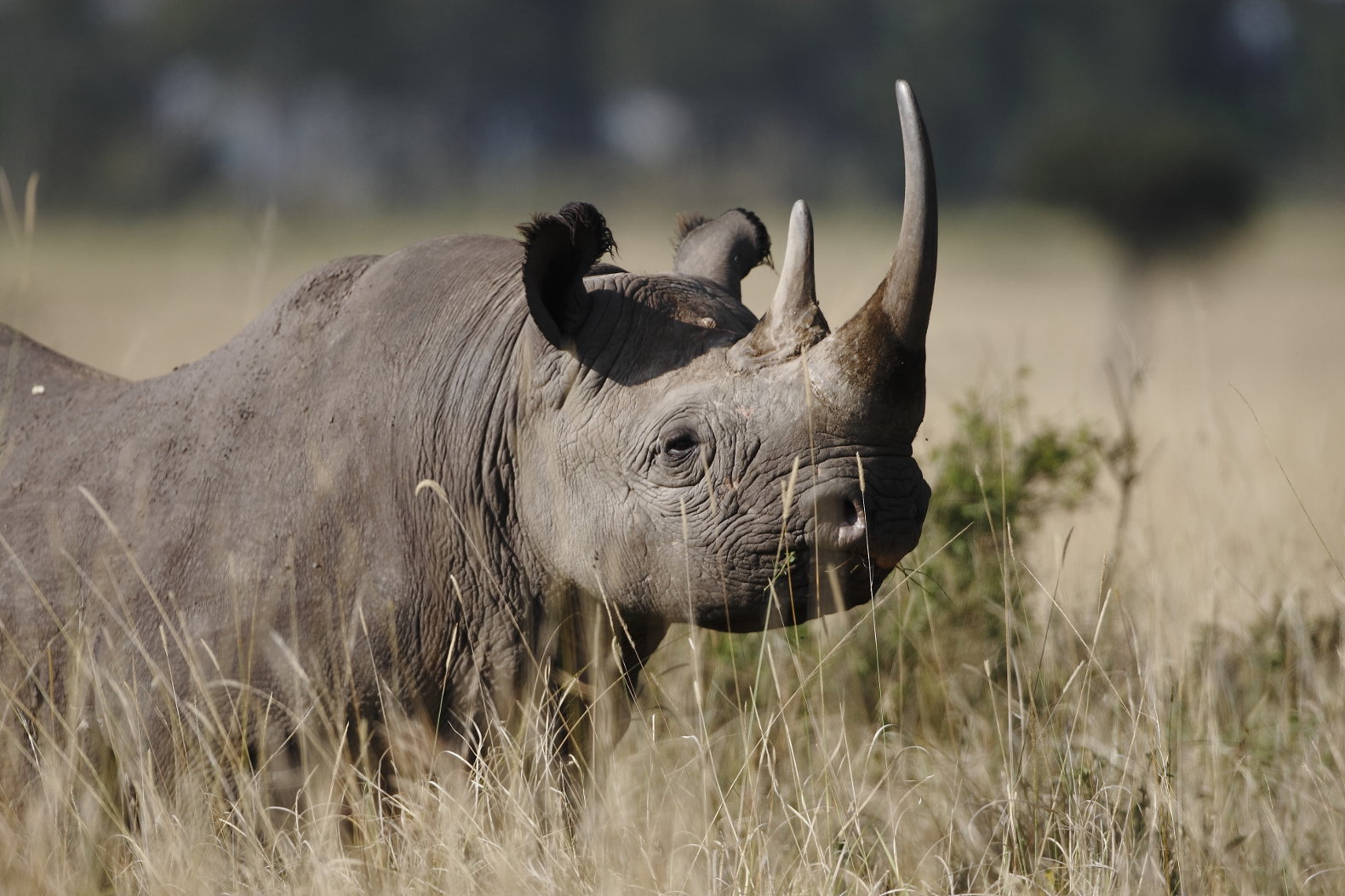THE BLACK RHINO
Background
Black rhinos are the smaller of the two African rhino species. The most notable difference between white and black rhinos are their hooked upper lip. This distinguishes them from the white rhino, which has a square lip. Black rhinos are browsers rather than grazers, and their pointed lip helps them feed on leaves from bushes and trees. They have two horns, and occasionally a third, small posterior horn.

Populations of black rhino declined dramatically in the 20th century at the hands of European hunters and settlers. Between 1960 and 1995, black rhino numbers dropped by a sobering 98%, to less than 2,500. Since then, the species has made a tremendous comeback from the brink of extinction.

Population
Thanks to persistent conservation efforts across Africa, black rhino numbers have doubled from their historic low 20 years ago to between 5,042 and 5,455 today. However, the black rhino is still considered critically endangered, and a lot of work remains to bring the numbers up to even a fraction of what it once was—and to ensure that it stays there. Wildlife crime—in this case, poaching and black-market trafficking of rhino horn—continues to plague the species and threaten its recovery.
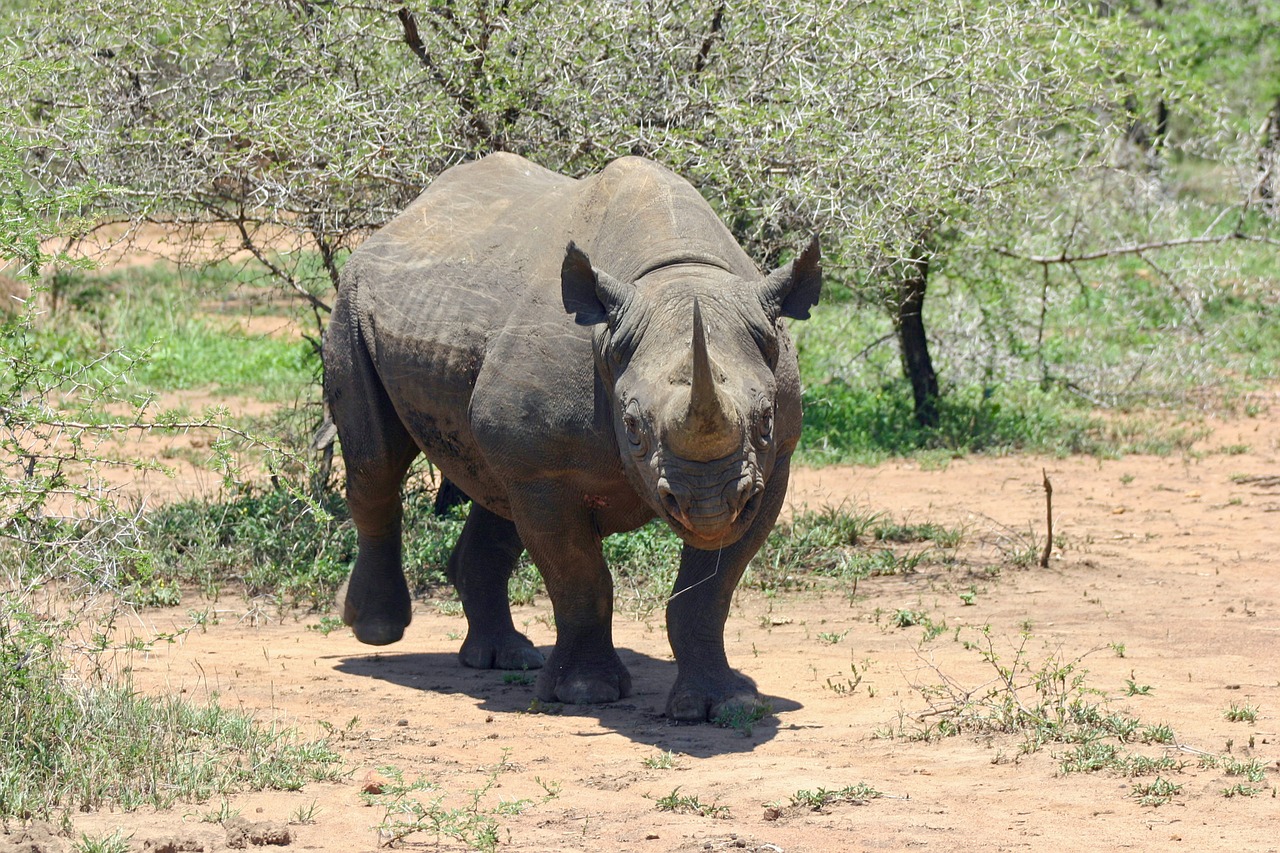
Of all the threats facing black rhinos, poaching is the deadliest. Black rhinos have two horns which make them lucrative targets for the illegal trade in rhino horn A wave of poaching for rhino horn rippled through Kenya and Tanzania, continued south through Zambia's Luangwa Valley as far as the Zambezi River, and spread into Zimbabwe. Political instability and wars have greatly hampered rhino conservation work in Africa, notably in Angola, Rwanda, Somalia, and Sudan. This situation has exacerbated threats such as trade in rhino horn and increased poaching due to poverty.
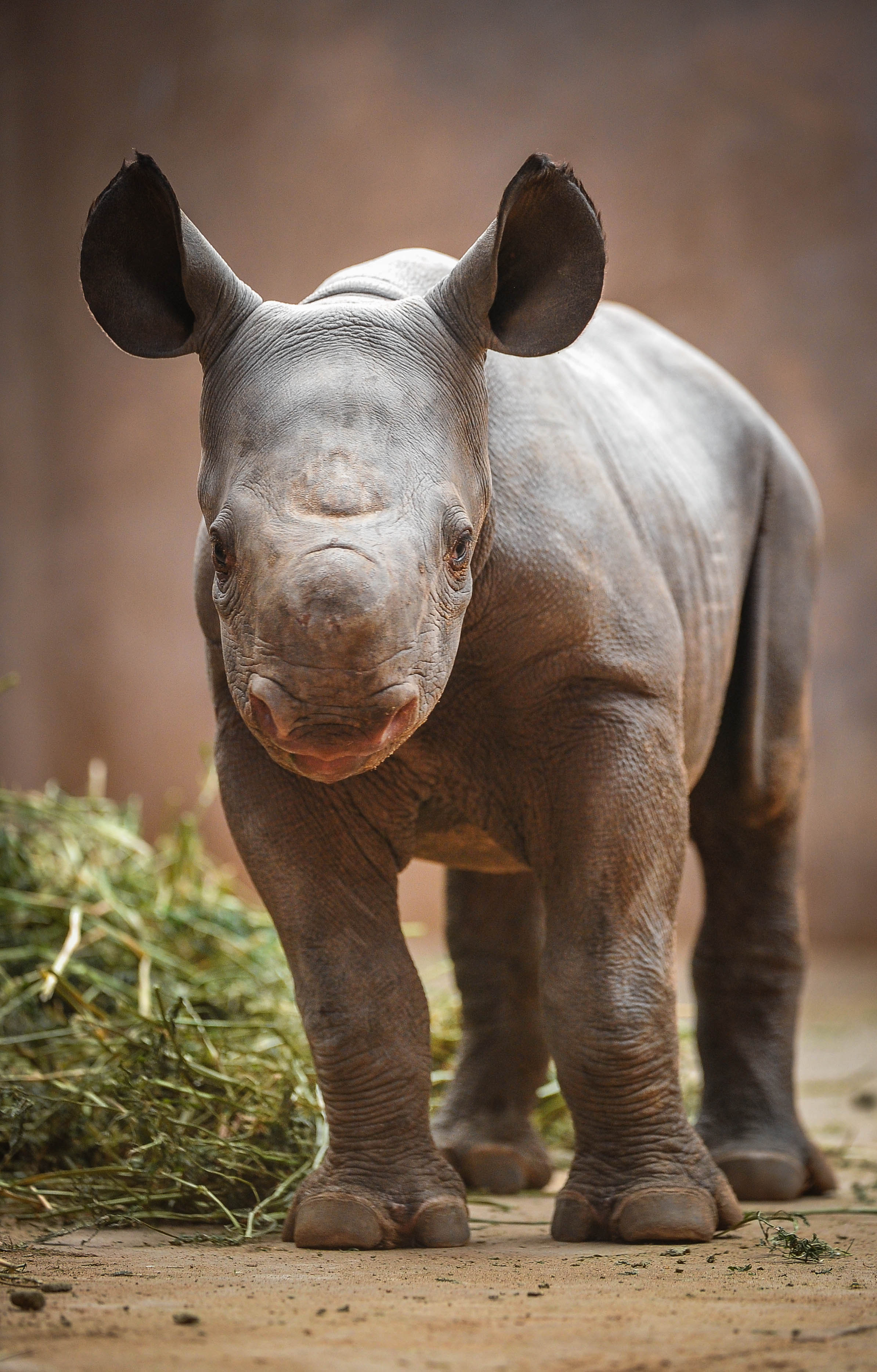
Endangered
Today, black rhinos remain critically endangered because of rising demand for rhino horn, from some Asian consumers, particularly in Vietnam and China, who use them in folk remedies. A recent increase in poaching in South Africa threatens to erase our conservation success, reaching an apex in 2014 when 1,215 rhinos were poached. Poaching numbers are slowly decreasing—1,054 were poached in 2016—but poaching continues unabated with numbers remaining unsustainably high.
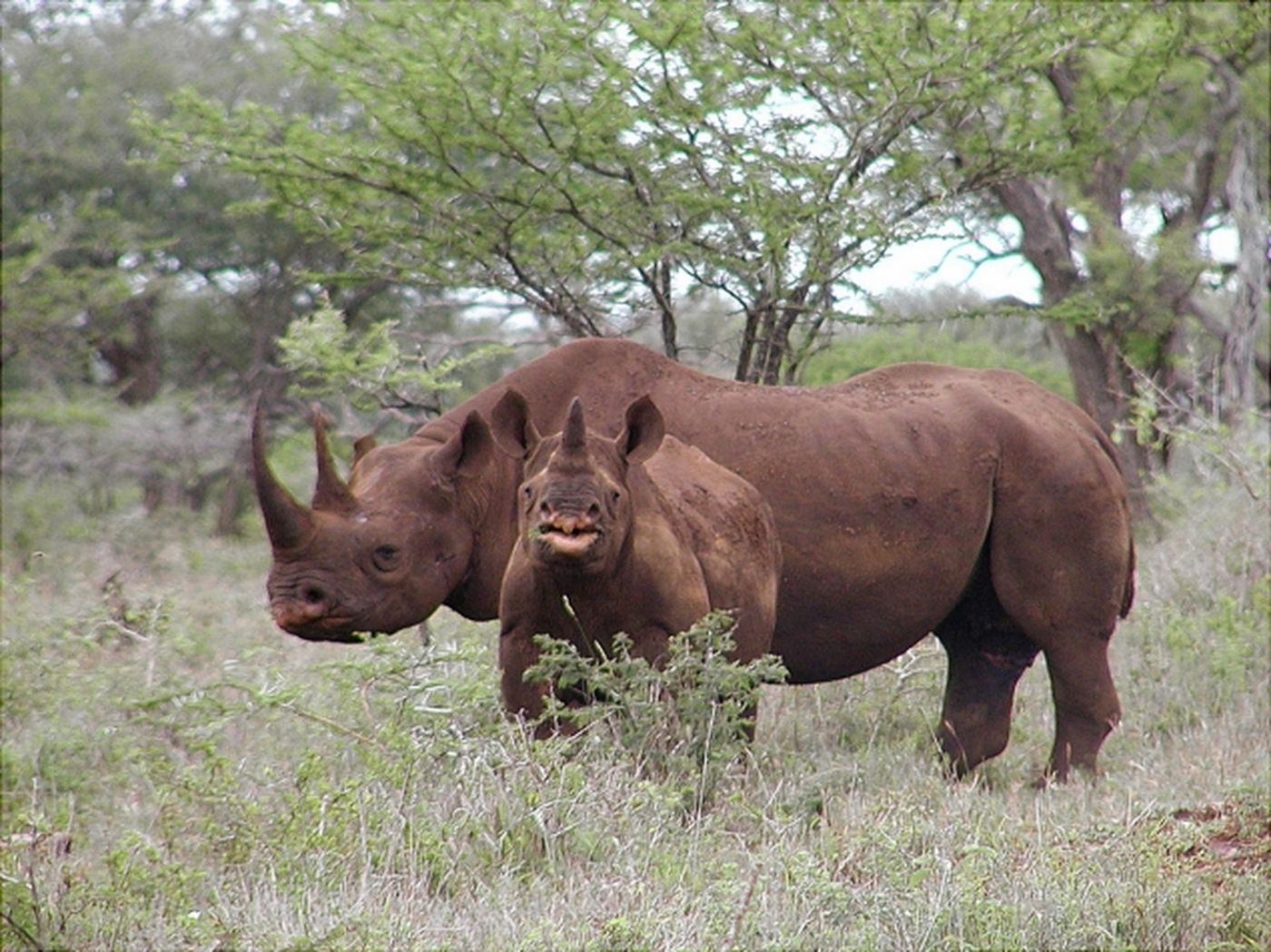
WWF launched an international effort to save wildlife in 1961, rescuing black rhinos—among many other species—from the brink of extinction. Thanks to persistent conservation efforts across Africa, the total number of black rhinos grew from 2,410 in 1995 to more than 5,000 today.
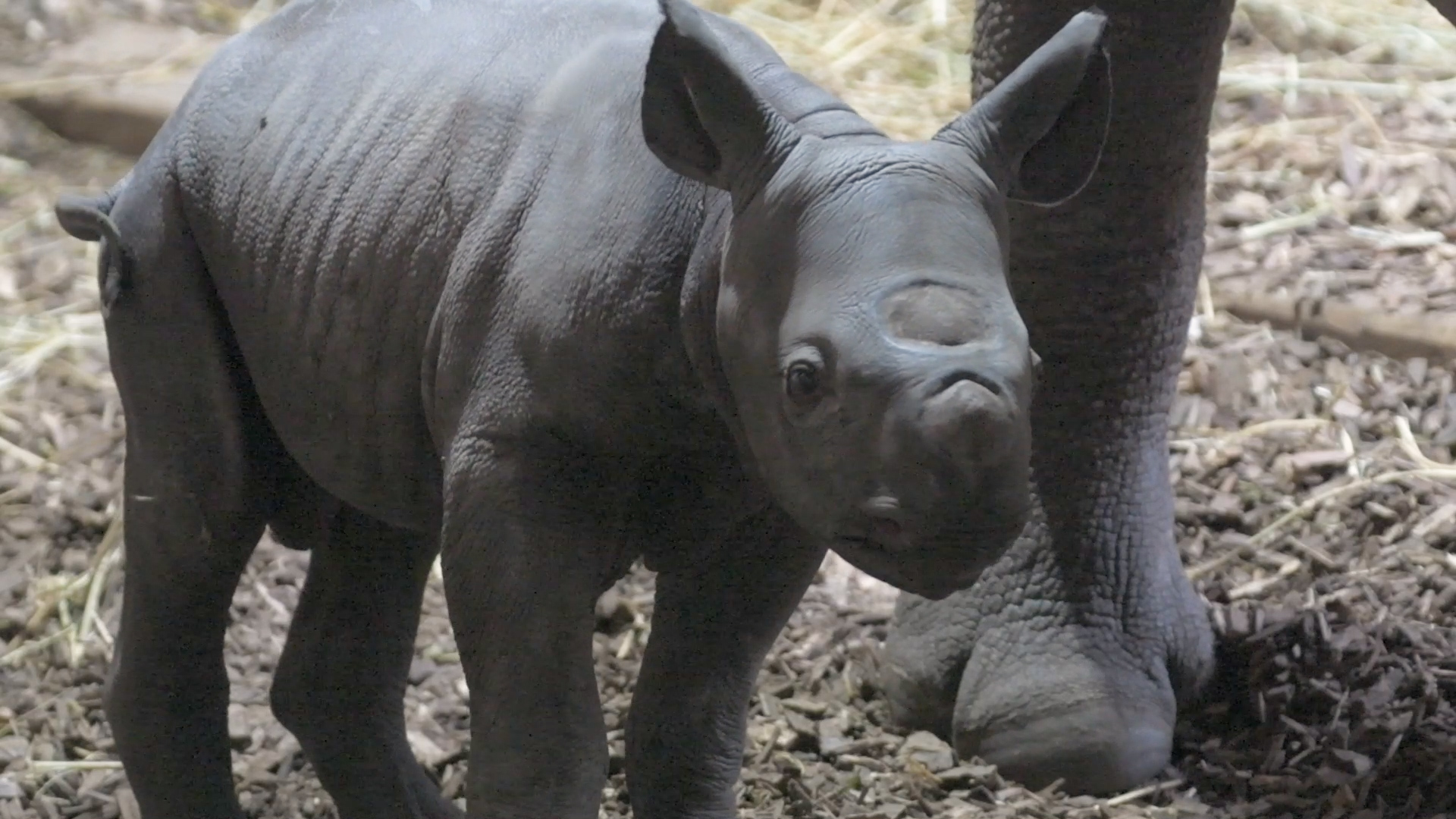
To protect black rhinos from poaching and habitat loss, WWF is taking action in three African rhino range countries: Namibia, Kenya, and South Africa. Together, these nations hold about 87% of the total black rhino population.
